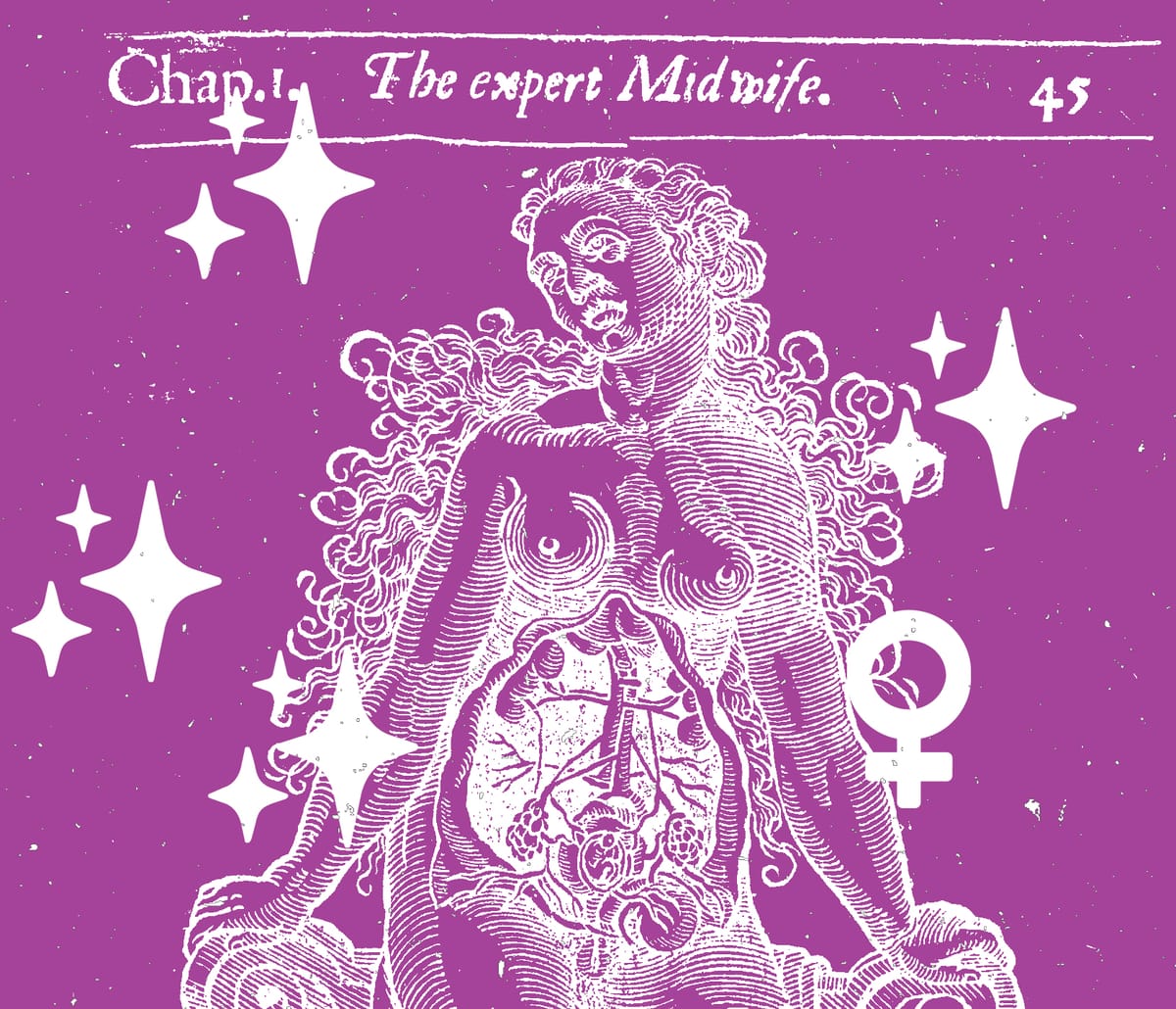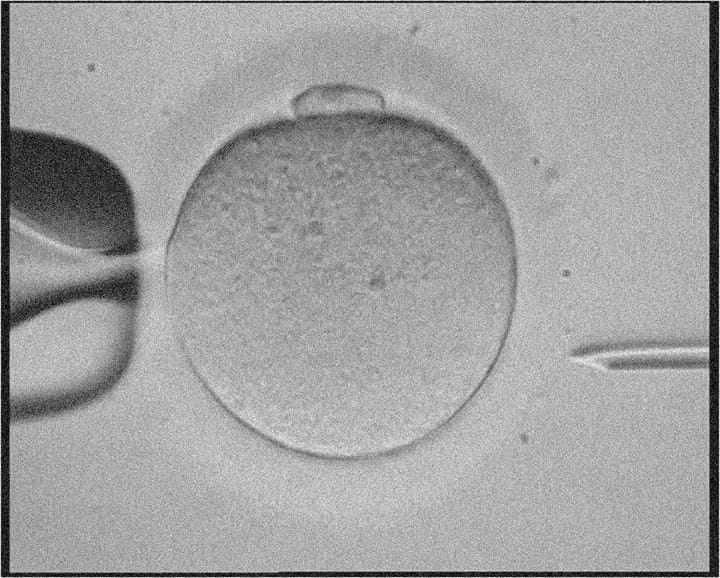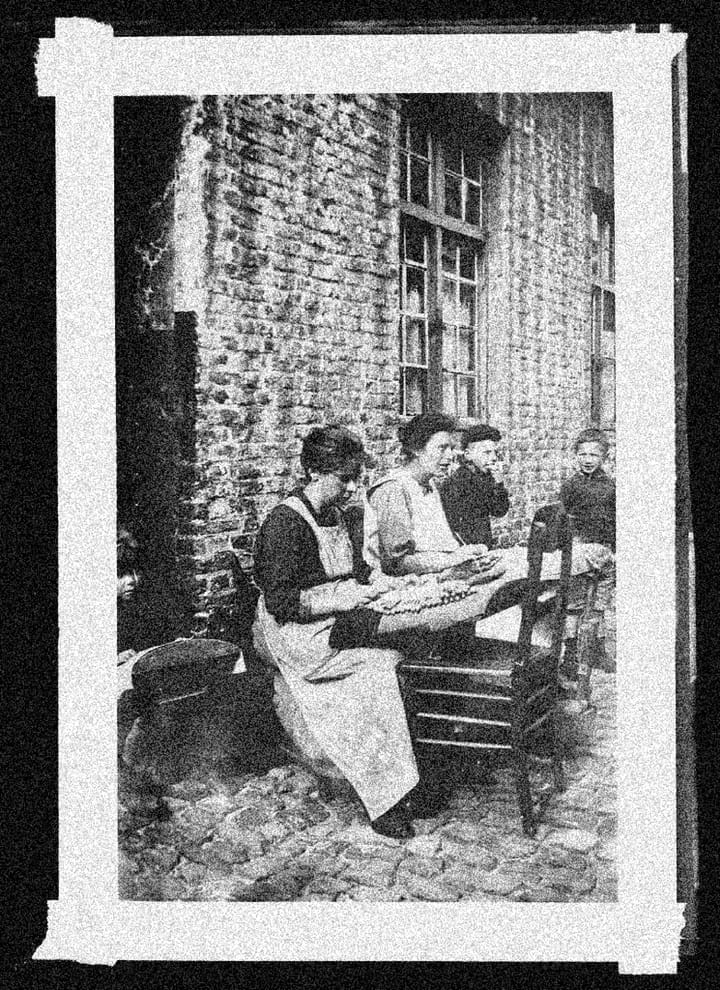In their groundbreaking pamphlet, Ehrenreich and English railed against a medical system that suppressed and sidelined women. Fifty years later, their radical anti-authoritarianism is increasingly powerless against—and sometimes even an accelerant for—the ongoing commodification of healthcare.
In 1970, the Boston Women's Health Book Collective published Our Bodies, Ourselves, a no-nonsense, common-speak booklet covering the fundamentals of women’s health from sexual identity, menstruation, pregnancy, abortion, birth and menopause. At the very same time, Barbara Ehrenreich—not yet an acclaimed author or honorary chair of the Democratic Socialists of America, but already the holder of a doctorate in cell biology—became a feminist. The moment, she wrote in her 2014 book Natural Causes, arrived at a checkup a few weeks before the birth of her first child, when she asked her male obstetrician whether her cervix had begun to dilate. “Where did a nice girl like this learn to talk like that?” was the doctor’s response. In a separate interview, Ehrenreich described the ordeal of the birth itself, which had taken place at a free clinic in New York in a rush: “They induced my labor because it was late in the evening and the doctor wanted to go home,” she said. “I was enraged. The experience made me a feminist.”
A few years later, she channeled her fury over this treatment into Witches, Midwives, and Nurses: A History of Women Healers, a brief, biting pamphlet authored with fellow SUNY educator Deirdre English. Witches sketched a history of the repression and persecution of women lay healers, from the witch hunts of the Middle Ages to the rise of the male-dominated American medical establishment, explicating the exclusion of women from medicine not as the inevitable outcome of innate differences in ability between the sexes, but as the result of a series of historical power struggles in which male practitioners, primarily of the upper classes, had sought to secure their monopoly on the profession of medicine (and, by extension, their earnings). “The suppression of women health workers and the rise to dominance of male professionals was not a ‘natural’ process, resulting automatically from changes in medical science, nor was it the result of women’s failure to take on healing work,” Ehrenreich and English wrote. “It was an active takeover by male professionals.”
The next year, the co-writers published a lesser-known companion work, Complaints and Disorders: The Sexual Politics of Sickness, on the ways that Gilded Age medical practice had construed upper-class women as “sick”—that is, frail and consumptive—and working-class women as “sickening”—germ-ridden and unkempt—in order to reproduce the notion of women as the weaker sex and thereby justify their subordination in society. Together, Witches and Complaints offered not only an unsparing indictment of the entrenched sexism of the medical system, but documentation of class conflict: Medieval witch hunts, for instance, had represented a “ruling class campaign of terror directed against the female peasant population” that was designed to suppress the predominantly female healers among the lower classes in service of legitimizing an emergent European medical profession that had the blessing of both church and state.
In the 1970s—that is, at the dawn of the neoliberal era—it was possible (even sensible) to understand patriarchy and capitalism as proxies for each other, particularly within the practice of medicine. When Ehrenreich and English first began releasing self-published copies of Witches in 1972, over 90% of doctors in the US were men, and the right to abortion wouldn’t become national law until Roe v. Wade the following year. Both Witches and Complaints, as the authors later noted, were influenced by (and would in turn come to influence) that particular period of second-wave feminism and, specifically, the women’s health movement. This constellation of feminist activists in the 1970s protested the medical establishment’s treatment of women and famously convened consciousness-raising groups to discuss and demystify subjects such as contraception, sexuality, and menopause and perform gynecological self-examinations in defiance of the prevailing wisdom that such expertise ought to be confined to (mostly male) professionals. “In the 70s you couldn’t get information even on the hormonal cycle,” Ehrenreich recalled in 2011. “Information that would seem like sixth grade sex ed material was unavailable—and practically illicit.”
Women’s Health Today
In the fifty years since the publication of Ehrenreich’s and English’s pamphlets, however, the stakes of women’s healthcare in the US have changed dramatically. Though there are certainly still doctors and other medical professionals inclined to disregard women’s concerns, ignore their pain, or otherwise mislead or condescend to them, women now make up over 37% of physicians and 55% of students entering med school in the US. Today women even constitute a majority of physicians practicing in certain specializations, such as obstetrics and gynecology (62%) and pediatrics (65%). Thanks in large part to the women’s health movement of the 70s, a basic understanding of female anatomy, sex, pregnancy, and birth control are now a standard part of health education, and mainstream women’s publications freely discuss reproductive rights and gynecological health, topics they once avoided or, as Ehrenreich noted, hazily referred to as “down there.”
But if these have all been welcome signs of progress within the notoriously cloistered practice of medicine, the last five decades of neoliberalism have also produced a kind of secondary women's health industry, whose brands are predicated on the historical neglect and dismissal of women by the medical establishment, and who profit from positioning those brands as subversive to that unjust legacy. Ehrenreich and English alluded to this transformation in their introduction to the 2010 reprint of Witches: “Compared to what we confronted in the 1970s, today’s American healthcare system features far more women as practitioners and even decision-makers, but it is also more single-mindedly driven by profit,” they wrote. To put it another way, the twenty-first century ruling class can vigorously oppose any and all attempts to decommodify healthcare in the US while simultaneously fighting medical sexism and nurturing the proliferation of new women’s health services.
Today, a number of women-centric health startups selling products like emergency contraception (Julie), prenatal vitamins (Perelel), and “at-home vaginal microbiome tests” (Evvy) have flourished, using talking points cribbed straight from the women’s health movement. For instance, Tia, a new concierge women’s healthcare provider, claims that it started because of women’s “stories of feeling dismissed or minimized by traditional medicine.” The company’s social media is awash in progressive messaging—one Instagram post assures viewers that their chronic symptoms aren’t simply “hysteria,” while another solemnly displays statistics on the black maternal mortality rate—and their website proclaims that they’re setting “a new standard of care for women.”
Of course, accessing this new standard of care requires an annual membership fee, even before the cost of doctor’s appointments, prescriptions, and other treatments, and Tia doesn’t accept “government-run plans” like Medicare or Medicaid (the latter of which covers around 65% of pregnant black women in the US).
These for-profit enterprises also exist alongside (and with the support of) an ecosystem of powerful funders committed to improving women’s health outcomes. Melinda French Gates, who came into possession of an extra $12.5 billion after her 2021 divorce and exit from the Gates Foundation, recently pledged $1 billion in philanthropic funding for organizations dedicated to reproductive rights and women’s advancement. (Gates’s venture capital fund has also financed Tia, among other startups.)
Another prominent investor, SteelSky Ventures—which bills itself as “the world's largest venture capital fund focused on women's healthcare” and currently holds $73 million in assets—has invested in companies such as Mae, a “culturally competent care platform for expectant mothers of color,” and Proov, a purveyor of “medical-quality at-home fertility tests for her and him.” Various celebrities and public figures have likewise channeled their money and influence into new women’s health organizations. After experiencing her own pregnancy complications, supermodel Christy Turlington Burns founded Every Mother Counts, an organization dedicated to improving maternal health outcomes around the globe. Just earlier this year, former Teen Vogue editor Elaine Welteroth and an array of celebrity supporters (Serena Williams, Chrissy Teigen, Kelly Rowland) launched BirthFund, a charity that provides grants for expectant mothers to pay for midwifery and non-hospital birth center care, which sometimes aren’t covered by insurance. “Instead of settling for the status quo, where birth is scary (and in some cases, deeply unsafe)... let’s make midwifery more accessible,” the group writes in their mission statement.
In the US, where the maternal mortality rate exceeds that of every other rich country, there’s no shortage of harrowing stories of childbirth complications or distressing hospital experiences to justify the existence of such projects. But even the most earnest and well-intentioned of the aforementioned women’s health services have no feasible solutions to the fundamental problem that structures all health inequalities in the country, which is, of course, a for-profit healthcare system that bankrupts so many people trying to pay exorbitant medical bills, delays or withholds medical treatment from those who can’t get the money to pay up front, and produces a deranged system of pressures and incentives that erode the quality of care across nearly every area of health. Contrary to what the burgeoning women’s health industry and NGOs might suggest, the US’s dismally high maternal and infant mortality rates aren’t so much a problem of a lack of societal awareness of women’s needs as they are the direct consequence of being the only wealthy country in the world without universal healthcare or guaranteed parental leave—which is to say, the direct consequence of the government’s blatant and ongoing abnegation of social provision.
Self Help
Central to second wave feminists’ collective challenge to male medical authority was the concept of “self-help,” or the notion that women were capable of understanding their bodies, participating in their own medical treatment, and reclaiming women-led practices that had been sidelined by the American medical establishment, such as midwifery. For women’s health activists, self-help ranged from conducting know-your-body workshops to teaching each other how to perform menstrual extraction, a type of early-stage abortion. But despite this DIY streak, the point of the movement wasn’t to retreat entirely from the medical system, but to transform it. “Self-help is not an alternative to confronting the medical system with the demands for reform of existing institutions,” Ehrenreich and English wrote in Complaints. “Self-help, or more generally, self-knowledge, is critical to that confrontation.”
Second wave women's health education initiatives—and women demanding information about their own bodies—were no doubt confrontational during a period when doctors brushed off women’s inquiries into the state of their own reproductive organs and routinely treated breast tumors by performing overly aggressive and disfiguring mastectomies, often without the full, informed consent of patients. But self-help is a somewhat different proposition today, when the average citizen is now more likely to encounter a deluge of medical information rather than a lack of it.
In the digital age, anyone can instantly join what amounts to a modern-day consciousness-raising group by turning to social media, podcasts, and online forums for medical advice. This, of course, includes plenty of legitimate information, but also an avalanche of folk remedies, distortions, and outright quackery. The crisis of credibility in our era is not merely relegated to "fake news." Algorithms on platforms like TikTok and Instagram have fed into the fear and mistrust of "official" sources, and have consistently facilitated the viral spread of questionable claims on reproductive health, including exaggerations and outright falsehoods about the dangers of birth control, and the idea that a cocktail of ibuprofen and gelatin can stop or delay one’s period.
Self-help also necessarily takes on a different cast after half a century of American politicians’ successful bipartisan efforts to bulldoze the social safety net and outsource its responsibilities to the citizenry. Since the 1970s, individuals, families, and “communities'' have been increasingly expected to shoulder the economic burdens of sickness, unemployment, and retirement (among other events) with little, if any, assistance from the state, a process that the political scientist Jacob Hacker has described as an economic “risk shift.” This means that while plenty of contemporary efforts to divest from the medical system may draw their anti-establishment energy from the practices of the women’s health movement and other left-wing ideologies, in the present era, most of these projects amount to a kind of primativist, insular libertarianism that complements and reinforces the status quo, rather than posing any kind of substantive challenge to the dearth of social services, which are necessarily contingent on redistribution of wealth.
Take the niche but growing practice of “free births,” or home births intentionally undertaken without any medical professionals present, including licensed midwives. Proponents of this practice, who have formed groups like the Free Birth Society and the Indie Birth Association, explicitly reject the medical system and the “industrial birth complex,” citing (as the women’s health movement before them did) past traumatic hospital experiences, pervasive sexism and racism within the American medical establishment, and the desire for more autonomy over their bodies and in their pregnancies. “I think women are really waking up, and they are tired of being abused,” the founder of the Free Birth Society told Marie Claire in 2021. “What I am so obsessed with is watching these women get fierce and be like, ‘Fuck the system. I don’t need this. My intuition can be my guide.’” (As the Free Birth Society is happy to remind its 131,000 Instagram followers, there is no law prohibiting this.)
While this distrust of the medical system may not be unfounded, the kind of total withdrawal proposed by the free birth model does little to address the problems of maternal health or pregnancy care in the US. For one thing, hospitals, for all their flaws, statistically remain the safest places to give birth in the US; even with midwives present, the neonatal death rate for home births and freestanding birth centers alike is four times higher than it is for hospital births. Part of the reason for this disparity is that midwifery in the US is a highly fragmented practice subject to different laws and licensing requirements depending on each state. The US also has the distinction of being one of the only rich countries where most midwives, even those that are certified and licensed, are poorly integrated into the existing healthcare system, which inevitably delays medical attention in the event of home birth emergencies. In countries where home births are statistically as safe as hospital births, such as Canada and the Netherlands, midwifery is regulated at the federal level and well-integrated into the hospital systems. Women seeking a home birth in these countries are furthermore first screened for risk factors such as breeches, a previous C-section, or even high blood pressure. But the free birth approach—which eschews not only hospital birth but also the licensed midwives, or “state-owned” midwives, as the Free Birth Society characterizes them—instead advocates only the further decentralization of midwifery through the use of “autonomous” or “traditional” midwives (that is, unlicensed lay midwives).
Since 2004, the rate of home births, birth center use, and free births—practices often shorthanded as “community birth”—have all increased. But once again, it’s difficult to extricate the preference for “community” solutions from the limitations imposed by austerity and privatization. Though plenty of women choose to give birth at home or in a freestanding birth center based on a desire for a more personalized, self-directed, or even feminist experience, the uptick in non-hospital births has also coincided with an alarming number of hospital maternity ward closures across the country and a subsequent increase in so-called maternity care deserts. According to one count, 217 obstetric units in the US closed between 2011 and 2023, including nearly 50 in Los Angeles County alone. A recent CalMatters investigation further found that most of the maternity ward closures in the city of Los Angeles had taken place at for-profit hospitals where up to 80% of patients were Medicaid recipients. This had clearly presented a dilemma for investors: Medicaid reimburses only around a fifth of what private insurance pays for childbirth, and maternity wards were therefore unprofitable. “Simply put, when for-profit hospitals look at the bottom line and choose to make cuts, one of the first services to disappear is usually maternity care,” the authors wrote. “No law prevents them from doing so.”
In the 70s the American medical system appeared to be an institution that was inherently hostile to many patients, often based on gender or race, and activists of the era responded appropriately, demanding to know what the hell was actually going on with their own bodies. But some fifty years later, it’s clear the radical anti-authoritarianism that guided the activism of the previous era is increasingly powerless against—and sometimes even an accelerant for—the ongoing commodification of healthcare. If the women’s health movement of the Second Wave represented a necessary and trenchant critique of American medicine of its time, it’s also the case that we’re now living in another. Or as Ehrenreich and English succinctly put it toward the end of Witches, Midwives, and Nurses, “We have our own moment of history to work out, our own struggles.”
■
Jennifer C. Pan is the author of the forthcoming book Selling Social Justice: Why the Rich Love Antiracism (Verso, 2025), a former host of the Jacobin Show, and a contributor to The New Republic, The Nation, Dissent, and other publications.




